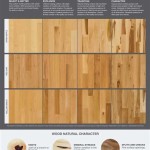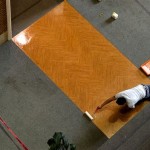Can You Lay Vinyl Flooring Over Concrete? A Comprehensive Guide
Vinyl flooring, prized for its durability, water resistance, and aesthetic versatility, is a popular choice for both residential and commercial spaces. Concrete subfloors, known for their strength and stability, are commonly found in basements, ground-level rooms, and commercial buildings. The question of whether vinyl flooring can be successfully installed over concrete is a frequent one, and the answer is generally yes, but with important considerations.
This article will delve into the intricacies of laying vinyl flooring over concrete. It will explore the benefits and challenges involved, crucial preparation steps, suitable vinyl flooring types, installation methods, and potential problems that may arise. This information will provide a comprehensive understanding of the process, enabling informed decisions for a successful flooring project.
Understanding the Compatibility: Vinyl and Concrete
The compatibility between vinyl flooring and concrete hinges on several fundamental factors. Primarily, the concrete subfloor must be properly prepared to provide a suitable surface for adhesion and to prevent moisture-related issues. When these factors are addressed, vinyl flooring can be a durable and attractive option for concrete surfaces.
Concrete possesses inherent properties that affect flooring installations. It is porous, meaning it can absorb and release moisture. It is also prone to cracking, settling, and imperfections. Ignoring these characteristics can lead to flooring failures, such as bubbling, warping, or adhesive breakdown. Therefore, a thorough evaluation and preparation process is paramount for a successful vinyl flooring installation over concrete.
Vinyl flooring, in its various forms (sheet vinyl, vinyl tile, and vinyl plank), offers different levels of moisture resistance and installation flexibility. Choosing the appropriate type of vinyl flooring for the specific characteristics of the concrete subfloor and the intended use of the space is essential. Understanding the nuances of both materials is the first step toward a long-lasting and aesthetically pleasing flooring solution.
Key Considerations Before Installation
Before even considering the aesthetic appeal of the vinyl flooring, several crucial aspects of the concrete subfloor must be rigorously investigated and addressed. These considerations will significantly impact the longevity and performance of the finished floor.
Moisture Testing: Concrete is porous, and moisture migration from the ground can be a significant problem. Excessive moisture trapped beneath the vinyl flooring can lead to mold growth, adhesive failure, and warping. Conducting a moisture test is essential to determine the moisture vapor emission rate (MVER) of the concrete slab. Common methods include the calcium chloride test (anhydrous calcium chloride test) and the relative humidity (RH) test. These tests provide a quantifiable measurement of moisture levels, allowing for informed decisions regarding moisture mitigation strategies.
If the moisture readings exceed the manufacturer's recommended limits for the chosen vinyl flooring, mitigation measures are necessary. These may include applying a moisture vapor barrier system, such as an epoxy coating specifically designed to block moisture migration. Proper moisture mitigation is non-negotiable for ensuring the long-term integrity of the vinyl flooring installation.
Subfloor Leveling: An uneven concrete subfloor is a major impediment to a successful vinyl flooring installation. Variations in height can cause the vinyl flooring to flex, crack, or separate from the adhesive. The subfloor must be meticulously leveled before proceeding. Self-leveling compounds (SLCs) are typically used to achieve a perfectly smooth and level surface. These compounds are cement-based mixtures that flow easily and harden to create a uniform plane. The application process requires careful attention to detail, including proper mixing and pouring techniques, to avoid air pockets and ensure even distribution.
Small cracks and imperfections can be filled with patching compounds. Larger cracks may require more extensive repair using concrete repair mortars. It is crucial to address all imperfections before applying the leveling compound to ensure a seamless and stable foundation for the vinyl flooring.
Surface Preparation and Cleaning: The concrete surface must be thoroughly cleaned and prepared to ensure proper adhesion of the vinyl flooring. This involves removing any existing coatings, adhesives, dirt, dust, grease, and other contaminants. Mechanical methods, such as grinding or shot blasting, may be necessary to remove stubborn coatings and create a profile on the concrete surface that promotes better adhesion. After mechanical preparation, the surface should be vacuumed thoroughly to remove all dust and debris. A primer specifically designed for concrete subfloors may be applied to further enhance adhesion and seal the surface.
The cleanliness of the concrete surface is directly correlated with the performance of the adhesive. A clean, dry, and properly prepared surface will provide the optimal bond for the vinyl flooring, preventing future issues such as lifting or bubbling.
Choosing the Right Vinyl Flooring
The type of vinyl flooring selected should be appropriate for the specific demands of the environment and the characteristics of the concrete subfloor. Different types offer varying levels of durability, water resistance, and installation methods.
Sheet Vinyl: Sheet vinyl is a continuous roll of vinyl flooring that provides a seamless surface, making it highly water-resistant. It is a good choice for bathrooms, kitchens, and other areas prone to moisture. Sheet vinyl requires a smooth and level subfloor, as any imperfections will be visible through the surface. The installation typically involves gluing the entire sheet to the subfloor.
Vinyl Tile: Vinyl tile offers a more modular installation approach. It is available in various sizes and designs, allowing for creative patterns and customization. Vinyl tile is generally less expensive than sheet vinyl but may be more susceptible to moisture infiltration at the seams if not properly installed. Installation involves adhering each tile to the subfloor using a recommended adhesive.
Vinyl Plank: Vinyl plank flooring replicates the look of hardwood or stone flooring. It is available in rigid and flexible variations. Rigid core vinyl plank (also known as SPC or WPC) offers greater dimensional stability and water resistance compared to flexible vinyl plank. Vinyl plank flooring can be installed using various methods, including glue-down, click-lock, and loose-lay. Click-lock systems are popular for their ease of installation and ability to "float" over the subfloor, accommodating minor imperfections.
When selecting vinyl flooring, consider the wear layer thickness. The wear layer is the top protective layer that resists scratches, scuffs, and stains. A thicker wear layer provides greater durability and is recommended for high-traffic areas. Also, consider the manufacturer's recommendations for adhesive compatibility with concrete subfloors. Using an incompatible adhesive can lead to bonding failures and costly repairs.
Installation Methods and Best Practices
The installation method for vinyl flooring over concrete depends on the type of vinyl flooring chosen and the specific characteristics of the subfloor. Adhering to best practices is crucial for a successful and long-lasting installation.
Glue-Down Installation: This method involves applying adhesive to the concrete subfloor and then pressing the vinyl flooring into place. Glue-down installation is commonly used for sheet vinyl, vinyl tile, and some types of vinyl plank. The choice of adhesive is critical. Use an adhesive specifically designed for vinyl flooring and concrete subfloors. Follow the manufacturer's instructions for application, open time (the time allowed for the adhesive to become tacky), and working time (the time available to install the flooring after applying the adhesive).
Use a notched trowel to apply the adhesive evenly to the subfloor. The size and shape of the notches will determine the amount of adhesive applied. Ensure that the entire surface of the vinyl flooring is in contact with the adhesive. Roll the flooring with a heavy roller to ensure proper bonding and remove any air pockets. Allow the adhesive to cure completely before allowing foot traffic on the new floor.
Click-Lock Installation: This method involves interlocking the edges of the vinyl planks or tiles to create a floating floor. Click-lock systems are popular for their ease of installation and do not require adhesive. However, a level subfloor is still essential for a stable and aesthetically pleasing result. Install an underlayment between the concrete subfloor and the vinyl flooring to provide cushioning, reduce noise transmission, and protect the flooring from moisture. Follow the manufacturer's instructions for the specific click-lock system being used.
Leave an expansion gap around the perimeter of the room to allow for movement due to temperature and humidity changes. Cover the expansion gap with baseboards or quarter-round molding. This method is often faster and less messy than glue-down installation but may not be suitable for all environments, especially those with high moisture levels.
Loose-Lay Installation: This method involves laying the vinyl flooring directly on the concrete subfloor without adhesive or interlocking. Loose-lay vinyl flooring typically has a high-friction backing that prevents it from shifting. This method is suitable for temporary installations or for areas where easy access to the subfloor is desired. A level subfloor is still important to prevent the flooring from rocking or buckling. Loose-lay vinyl flooring is generally less durable than glue-down or click-lock installations and may not be suitable for high-traffic areas.
Potential Problems and Troubleshooting
Despite careful planning and execution, problems may still arise when laying vinyl flooring over concrete. Understanding common issues and their solutions can help prevent costly repairs and ensure a successful installation.
Moisture Problems: Excessive moisture in the concrete subfloor is the most common cause of flooring failures. If moisture testing was inadequate or moisture mitigation measures were insufficient, bubbling, warping, or adhesive failure may occur. Addressing moisture problems requires identifying the source of the moisture and implementing effective mitigation strategies, such as installing a moisture vapor barrier or improving ventilation. In severe cases, it may be necessary to remove the vinyl flooring and re-treat the subfloor.
Adhesive Failure: Using the wrong adhesive, applying it improperly, or failing to prepare the subfloor adequately can lead to adhesive failure. The vinyl flooring may lift, bubble, or slide if the adhesive bond is compromised. To repair adhesive failure, remove the affected area of vinyl flooring, clean the subfloor thoroughly, and re-apply the appropriate adhesive according to the manufacturer's instructions. Ensure that the subfloor is dry and free from contaminants before applying the adhesive.
Uneven Subfloor: If the concrete subfloor was not properly leveled, the vinyl flooring may flex, crack, or separate at the seams. An uneven subfloor can also cause the flooring to wear unevenly, reducing its lifespan. To correct an uneven subfloor, remove the vinyl flooring, apply a self-leveling compound to create a smooth and level surface, and then reinstall the flooring. Taking the time to properly level the subfloor is essential for a long-lasting and aesthetically pleasing result.
Cracking: Concrete is prone to cracking, and these cracks can telegraph through the vinyl flooring, creating unsightly lines or even causing the flooring to break. Before installing vinyl flooring, repair any cracks in the concrete subfloor using a concrete repair mortar. For larger cracks, consider using a crack suppression membrane to prevent future cracking from affecting the vinyl flooring. Regular inspection of the concrete subfloor is always advisable to catch issues early on.

How To Prepare A Concrete Floor For Vinyl Flooring Parrys

Easy Ways To Install Vinyl Plank Flooring On Concrete

Tips For Installing Vinyl Plank Over Concrete Floors Lemon Thistle

Easy Ways To Install Vinyl Plank Flooring On Concrete

Easy Ways To Install Vinyl Plank Flooring On Concrete

How To Install Vinyl Or Laminate Floors In A Basement Over Concrete Slab

How To Install Vinyl Or Laminate Floors In A Basement Over Concrete Slab

How To Lay Vinyl Sheet Flooring On Concrete

Best How To Install Vinyl Plank Flooring Four Generations One Roof

Concrete Subfloor Preparation For The Vinyl Floor Installation How To Diy Mryoucandoityourself
Related Posts








